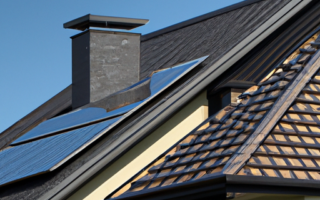Roof Construction Materials: A Comprehensive Guide
When it comes to roof construction, one of the most important aspects to consider is the choice of materials. The right roofing materials can enhance the durability, energy efficiency, and overall aesthetics of a building. In this comprehensive guide, we will explore various roof construction materials and their key characteristics.
1. Asphalt Shingles: Asphalt shingles are one of the most popular roofing materials due to their affordability and ease of installation. They come in a wide range of colors and styles, making them suitable for various architectural designs. However, asphalt shingles may not be as durable as other materials and may require occasional maintenance.
2. Metal Roofing: Metal roofing materials, including steel, aluminum, and copper, offer exceptional durability and weather resistance. They can last up to 50 years or more with proper maintenance. Metal roofs are also eco-friendly, as they are often made from recyclable materials and can be coated to enhance energy efficiency.
3. Clay and Concrete Tiles: Clay and concrete tiles are known for their timeless beauty and longevity. They can withstand extreme weather conditions and provide excellent insulation. However, these tiles are heavier than other roofing materials, which may require additional structural support during installation.
4. Wood Shakes and Shingles: Wood shakes and shingles are popular for their natural and rustic appearance. They are typically made from cedar or redwood and offer good insulation properties. However, wood roofing requires regular maintenance to prevent mold, rot, and insect infestations. Additionally, certain areas may have building codes and restrictions on the use of wood roofing materials due to fire hazards.
5. Synthetic Roofing Materials: Synthetic materials such as synthetic slate, rubber, or plastic polymers offer the look of traditional roofing materials with improved durability and lower maintenance requirements. They are lighter in weight compared to natural materials and can be a cost-effective alternative.
Considerations for Choosing Roofing Materials:
1. Climate: Consider the climate and weather conditions in your area. Some materials are better suited for hot climates, while others excel in colder regions with heavy snowfall or high winds.
2. Budget: Determine your budget and consider the long-term value of the roofing materials. While some options may have a higher upfront cost, they can offer significant savings in terms of energy efficiency and durability over time.
3. Architectural Style: The roofing material should complement the architectural style of the building. Consider the color, texture, and overall aesthetic appeal when selecting the right material.
4. Maintenance: Evaluate the maintenance requirements of different roofing materials. Some materials may require regular inspections, cleaning, or treatments to prolong their lifespan.
Conclusion:
Choosing the right roofing material is crucial for a successful roof construction project. Consider the climate, budget, architectural style, and maintenance requirements to make an informed decision. Whether it’s the affordability of asphalt shingles, the durability of metal roofing, or the timeless beauty of clay tiles, there is a wide range of options available to suit every need.
Exploring Roofing Techniques: How Structures Are Built from the Top Down
When it comes to constructing a roof, there are various techniques that are utilized to ensure a sturdy and efficient structure. The process of building a roof involves considering factors such as the type of materials being used, the shape of the structure, and the climate conditions in the area.
One commonly used technique in roof construction is known as the „top down” approach. This method involves starting the construction of the roof from the top and working downward. The advantage of this technique is that it allows for the installation of the roof coverings and weatherproofing layers to be completed before the lower components of the roof are built.
Roofing techniques can vary depending on the type of roof being constructed. For pitched roofs, the process typically involves the installation of trusses or rafters to provide the structural support. These are then covered with sheathing material, such as plywood or oriented strand board (OSB), which forms the base for the roof covering.
For flat roofs, a different approach may be taken. The construction of a flat roof involves the installation of a series of layers, including a structural deck, insulation, and a waterproofing membrane. This ensures that the roof is able to withstand the elements and provides a durable and leak-free surface.
Another important aspect of roof construction is the choice of materials. Commonly used roofing materials include asphalt shingles, metal, concrete tiles, and clay tiles. Each material has its own unique properties, such as durability, cost, and energy efficiency, making it important to consider these factors when selecting the appropriate material for a roof.
Furthermore, environmental factors should be taken into consideration when designing and constructing a roof. For example, in areas prone to high winds or hurricanes, it is important to use techniques and materials that can withstand these conditions. Additionally, the choice of insulation and ventilation can greatly impact the energy efficiency of a roof, which is an important consideration for reducing energy consumption and minimizing environmental impact.
In conclusion, exploring roofing techniques is an essential aspect of roof construction. By understanding the various approaches and materials available, builders can create structurally sound and efficient roofs that will withstand the test of time. Whether it’s a pitched roof or a flat roof, the top-down construction method and careful consideration of materials and environmental factors are key to successful roof construction.
Important Considerations for Roof Construction: Durability, Energy Efficiency, and Maintenance
When it comes to roof construction, there are a few important considerations that every homeowner should keep in mind. These considerations include durability, energy efficiency, and maintenance.
Durability is one of the most crucial aspects of roof construction. A durable roof is essential for protecting your home from various weather conditions, such as rain, snow, wind, and hail. It is important to choose high-quality materials that are weather-resistant and can withstand the elements over time. Common durable roofing materials include asphalt shingles, metal, clay tiles, and slate.
Energy efficiency is another significant factor to consider in roof construction. An energy-efficient roof can help reduce your heating and cooling costs and minimize your environmental impact. When choosing roofing materials, look for options with high insulation properties and high solar reflectance. Insulation helps keep the interior temperature stable while solar reflectance reduces the amount of heat absorbed by the roof.
Maintenance is often overlooked but plays a vital role in prolonging the lifespan of your roof. Regular maintenance and inspections can help detect any potential issues early on and prevent costly repairs later. Additionally, proper roof maintenance ensures that your roof remains in good condition and continues to provide adequate protection for your home. Common maintenance tasks include cleaning gutters, removing debris, and checking for leaks or damage.
When embarking on a roof construction project, it is crucial to prioritize durability, energy efficiency, and maintenance. By considering these factors, you can ensure that your roof will not only withstand the test of time but also contribute to the overall comfort and efficiency of your home.
Innovations in Roofing: Emerging Trends and Sustainable Solutions
Innovations in roofing have rapidly evolved in recent years, driven by the need for more sustainable solutions and the desire for enhanced performance. With climate change and environmental concerns at the forefront, the roofing industry has embraced emerging trends and materials to create roofs that are not only functional but also environmentally-friendly.
One of the most prominent trends in roofing is the use of green roofs or living roofs. These roofs are covered with vegetation, providing numerous benefits both for the building and the environment. Green roofs offer insulation, reducing energy consumption and providing better control over temperature fluctuations. They also absorb rainwater, reducing the strain on drainage systems and mitigating the risk of flooding. Additionally, green roofs can improve air quality by absorbing pollutants and releasing oxygen.
Another innovation in roofing is the integration of solar panels. Solar roofing systems are becoming increasingly popular as a way to generate renewable energy and reduce reliance on fossil fuels. These roofs are equipped with solar cells that capture sunlight and convert it into electricity. With advancements in technology, solar panels are now more efficient, cost-effective, and aesthetically pleasing. Some companies even offer solar shingles, which blend seamlessly with traditional roofing materials.
Sustainable roofing materials have also emerged as a key innovation. Traditional roofing materials, such as asphalt shingles, have significant environmental impacts due to their production and disposal. To address these concerns, alternative materials like metal, clay, and recycled materials are being widely used. Metal roofs, for example, are known for their durability, recyclability, and energy efficiency. Clay tiles, on the other hand, offer longevity and thermal insulation properties. Recycled materials, such as rubber or plastic, are being repurposed into roofing products, reducing waste and promoting a circular economy.
The concept of smart roofs has also gained traction in the roofing industry. Smart roofs are equipped with sensors and advanced technologies that provide real-time data on various parameters such as temperature, humidity, and energy usage. This information allows building owners to optimize energy consumption, detect leaks or damages, and efficiently manage roof maintenance. Smart roofs contribute to overall building efficiency and can help reduce costs and improve sustainability.
As roofing continues to evolve, it is essential to consider the environmental impact, energy efficiency, and performance of roofing systems. With innovations in green roofs, solar roofing, sustainable materials, and smart technology, the roofing industry is moving towards a more sustainable and efficient future.



